I.D. Antarctica 2023 – Week #1 Answers
Hi everyone! We hope you enjoyed identifying this first round of mystery seabirds and zooplankton.
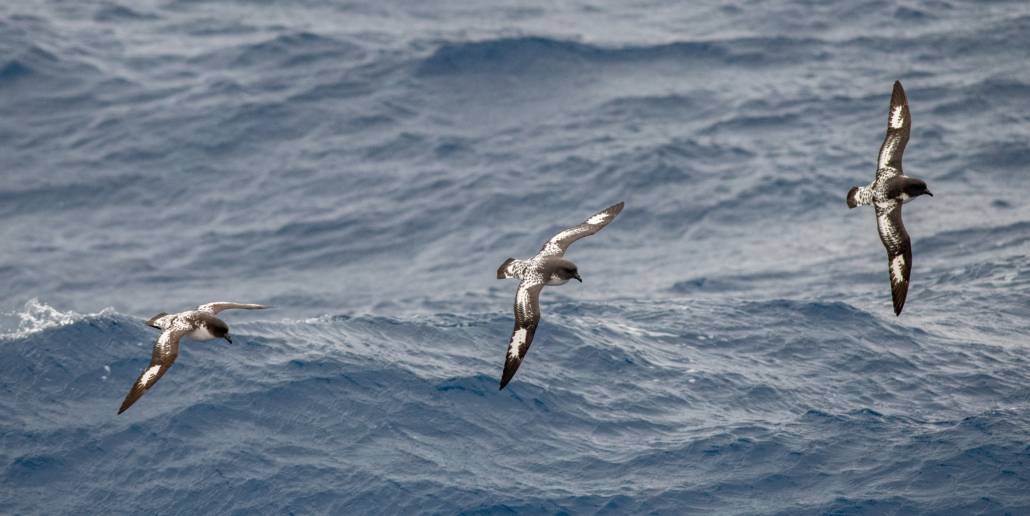
Mystery Seabird #1
The first sea bird is called a Cape petrel, or Daption capense. This might have been a tough ID because you have to go through most of the sea bird dichotomous key and some traits are relatively subjective. For example, Q3 describes the bird’s beak size relative to its head. Without seeing a lot of different Antarctic birds, it might not be immediately clear that the beak is about the same size as its head. But if you take a look at the Royal Albatross in the first post, you’ll notice just how long their beak is!
One of the key traits to identifying Cape petrels are the stunning white spots that cover their body. They are the only sea bird with this unique dappled coloring. A popular nickname for Cape petrels is “flying oreos”.
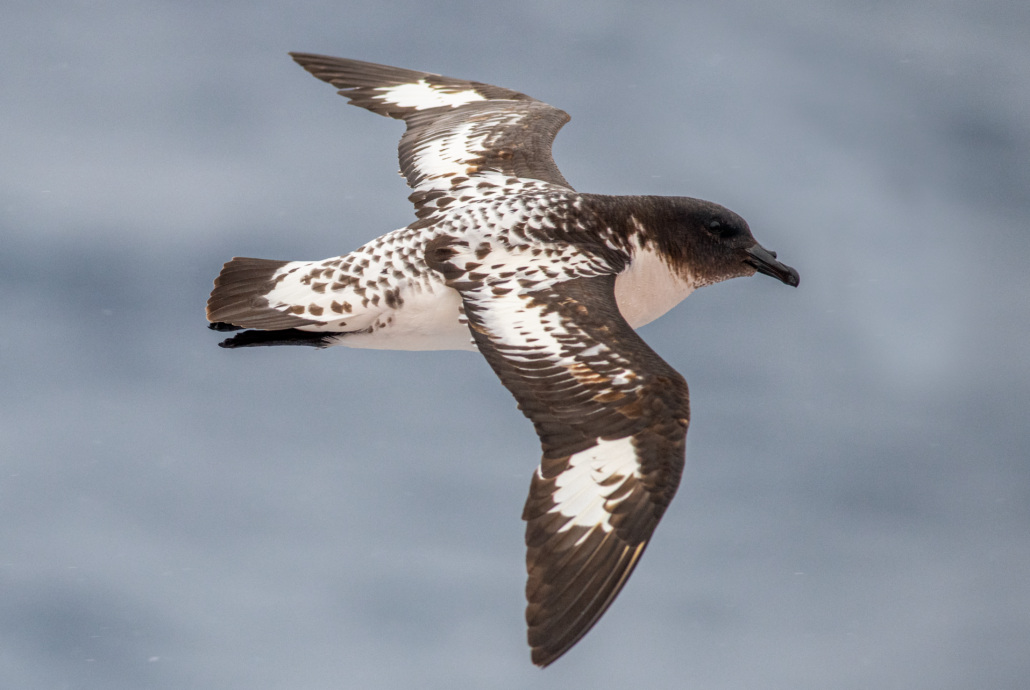
Cape petrels are some of our favorite Antarctic sea birds. In addition to their beauty, they are remarkably agile flyers and sometimes hunt in large flocks. We frequently see them feeding during intense storms surrounded by massive waves, it seems like no conditions are too intense for these hardy flying oreos! They are also incredibly abundant in the Southern Ocean, with an estimated population size of about 2 million individuals.
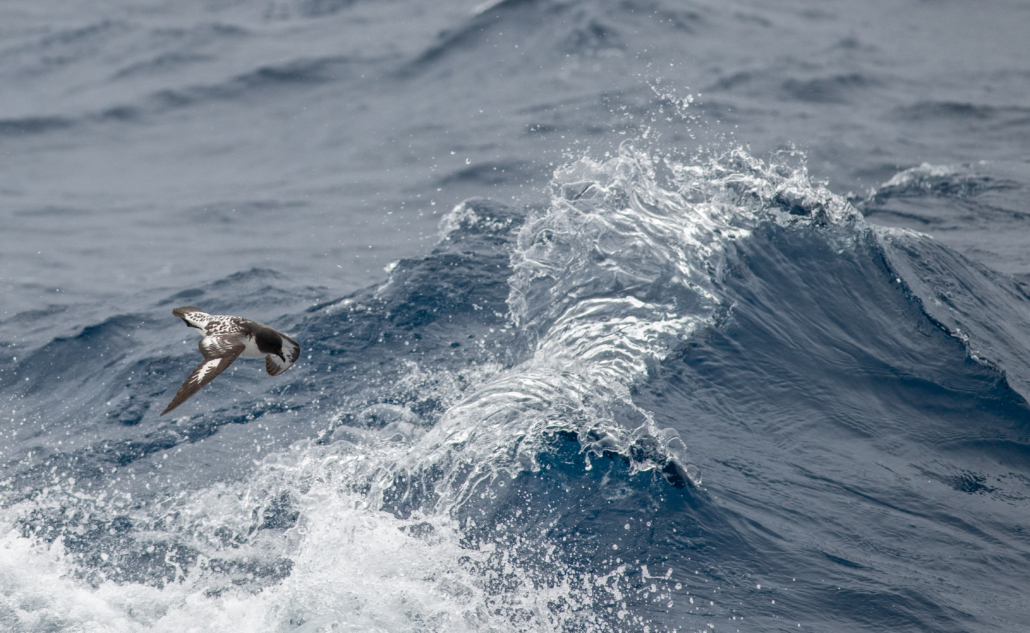
Mystery Zooplankton
We know it was probably even harder to figure out what their zooplankton prey is. The correct identification is Antarctic krill, or Euphausia superba. Similar to the sea bird key, many of the questions in the zooplankton dichotomous key can be hard to immediately understand. For example, the krill might look long and skinny at first, but compared to bristle and arrow worms its not very “pencil” shaped. This back-and-forth reasoning is frequently how scientists have to use dichotomous keys. If you make it to a dead-end and the final ID’s don’t really fit, just go back to the beginning and give it another try! The circular eye (as you can see more clearly in the image below) are one of the main distinctions between Euphausia superba and another species of krill – Thysanoessa macrura.
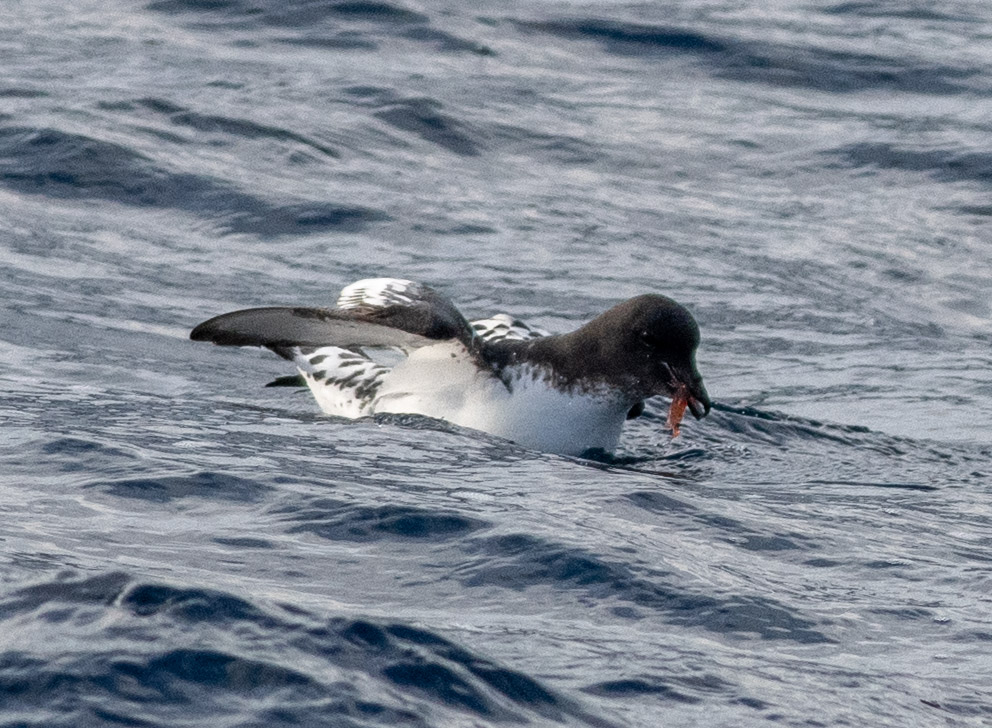
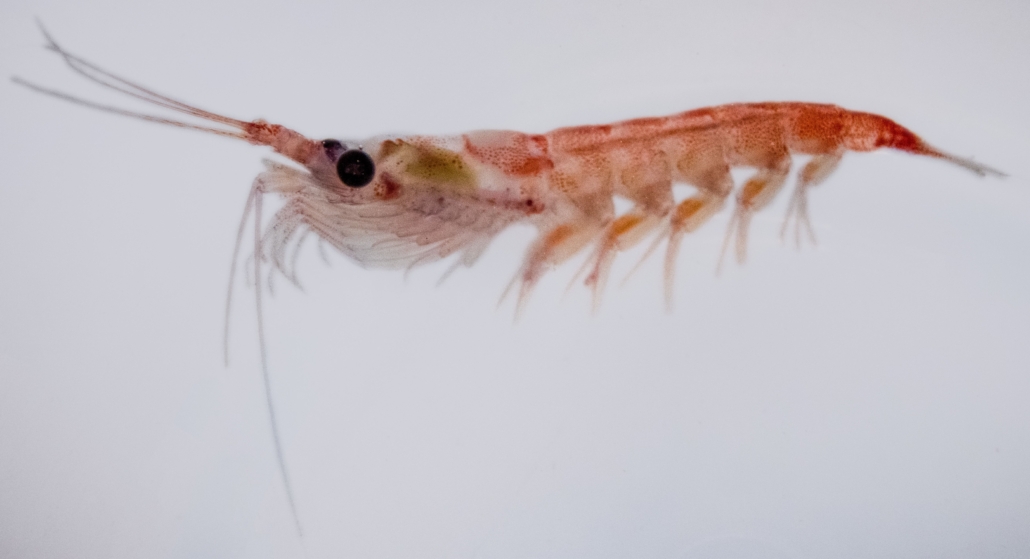
Antarctic krill are an incredibly important component of the Antarctic food web. In the image above, you can see the green area behind the krill’s eyes. This green coloration is the animal’s gut, which is full of tiny marine plants called phytoplankton. Krill form an important link in the food web between these tiny photosynthetic marine plants and larger predators like penguins, whales, fishes, and sea birds! Antarctic krill can make up over 80% of Cape petrels diet composition.
Mystery Seabird #2
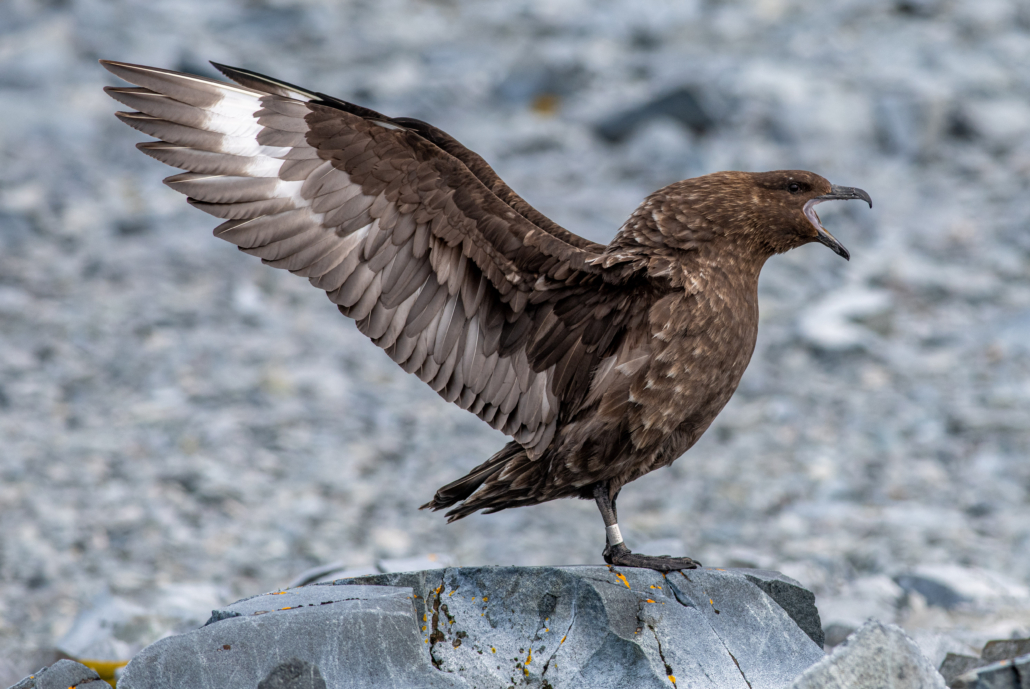
This second sea bird was hopefully a little easier – it’s called a skua, or Stercorarius spp. The dark brown wings and single white patch give them away. There are two species of skuas in our area of Antarctica – brown skuas (Stercorarius antarcticus) and south polar skuas (Stercorarius maccormicki). They are incredibly challenging to tell apart and we struggle with their correct identification. You can probably notice that both species are members of the same genus – Stercorarius.
The “spp.” stands for “species” and it signifies a bird identified with our simplified key could be at least two different species of the genus Stercorarius. The bird you identified is a south polar skua. These large birds nest in Antarctica, but actually fly close to North America and hunt in offshore areas of the Pacific and Atlantic Oceans when they’re not breeding.
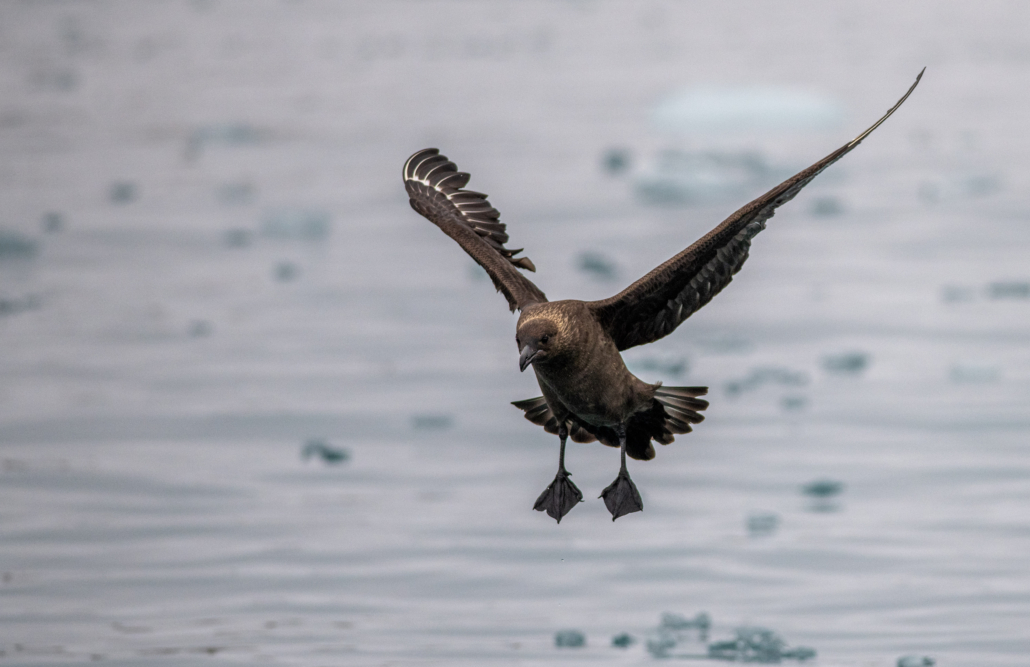
South polar and brown skuas are both ferocious predators. They eat just about anything they can get their beaks on, including penguin chicks, other skuas, zooplankton, fishes, and many other items. They will also attack humans with zero hesitation if you get too close to their nests.
We know the prey in its beak was quite small, so we’ll be incredibly impressed if anyone correctly figured out it was also an Antarctic krill (Euphausia superba)! You might have heard penguins eat krill (especially if you’ve seen the movie Happy Feet 2), but we hope these images give you an idea of just how important Antarctic krill are for other bird species too.
A Sneak Peek
Below are two images of a skua hunting and ultimately capturing another Antarctic creature, which should give you a hint for next week’s mystery organism…
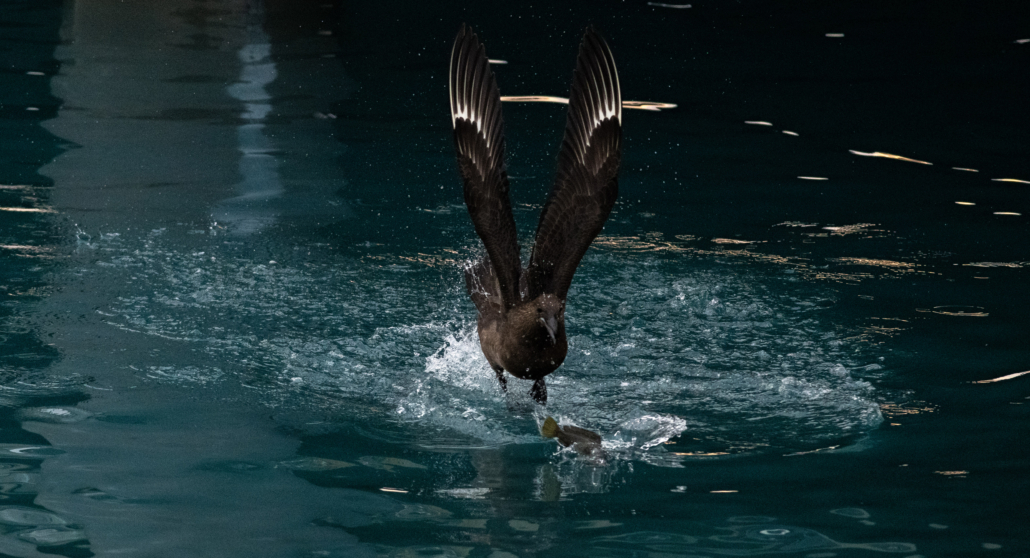
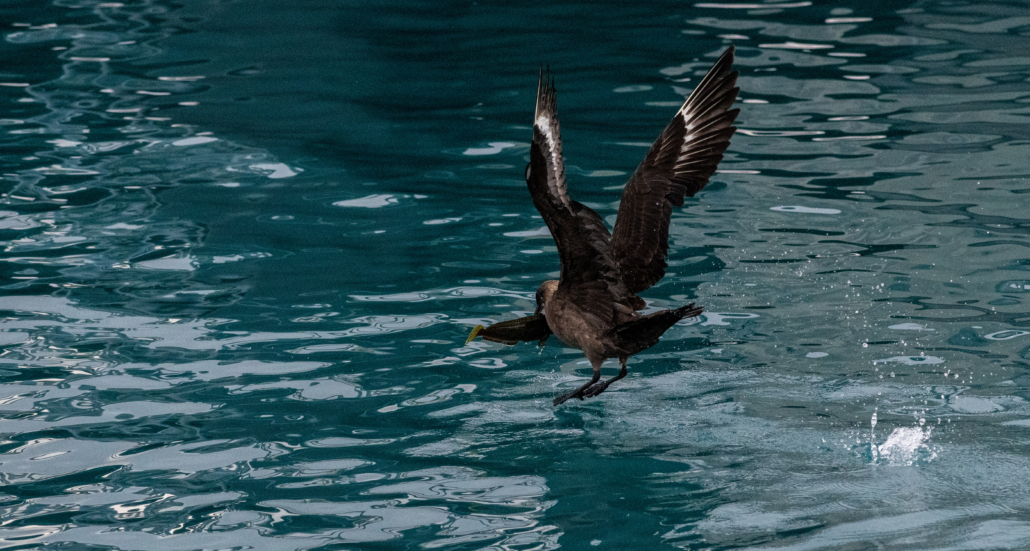
All photos on this page were taken by Andrew Corso




